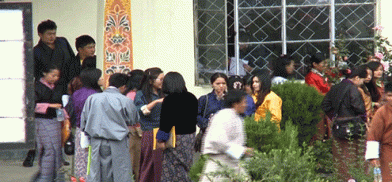Unemployment rate in Bhutan hits 5 percent in 2020
The unemployment rate in Bhutan has increased drastically to 5 percent, according to the latest statistics announced by the Labour Force Survey, which was conducted in November and December 2020

The unemployment rate in Bhutan has increased drastically to 5 percent, according to the latest statistics announced by the Labour Force Survey, which was conducted in November and December 2020. Thimphu, the capital and largest city of Bhutan, has the highest youth unemployment rate.
One of the main reasons for unemployment, the survey found, was shutdown and restrictions due to COVID, which led many to lose jobs.
The survey said that an increasing trend in the unemployment rate has been observed over the years, except for the year 2019, according to The Bhutanese.
As per the report, the COVID-19 pandemic has had a major effect on jobs worldwide. Since the industry and service sectors remained closed, work prospects for the unemployed were significantly diminished. The overseas returnees and those laid-off workers by the affected industries worsened the situation. The tourism and hospitality industries were especially hard-hit by the pandemic.
The report said the youth unemployment rate in urban areas (33.3 percent) is double than that of rural areas (15.1 percent). Thimphu has the highest youth unemployment rate (37.1 percent) followed by Paro(29.6 percent), Pemagatshel (27.8 percent), Sarpang (25.3 percent), Dagana(24.8 percent), Chhukha (24.2 percent) and Punakha (22.7 percent).
While Monggar district or Dzongkhag has the lowest youth unemployment rate at 5.3 percent, the survey said. Among the men and women, the rates show wide variation amongst various districts. In Thimphu, the rate is 41.0 percent for women and 31.7 percent for men. In the same way, in Paro, the rate is higher for women(36.9 percent) than men (21.1 percent).
“The reasons for being unemployed, among several reasons cited, recently completed studies (19.5 percent), laid off due to COVID-19 pandemic (19 percent), lack of adequate qualification (16 percent), and lack of experience (10.8 percent) are the major ones. The reasons for being unemployed vary slightly,” the report stated.
According to the survey, a total of 9,012households were chosen from twenty districts, with 38 percent (3,420households) living in urban areas and 62 percent (5,592 households) living in rural areas. The survey questionnaire was completed by8,932 households out of a total of 9,012 households, yielding a response rate of 99.1 percent.
The survey data was collected by a total of 124 enumerators and 20 supervisors, the newspaper said.
The population of working age is projected to be 488,336 individuals, with 233,844 men and 254,492 women. There are 331,222economically active people in the working-age community, with 51.2 percent of men and 48.8 percent of women. Rural areas account for 68.4 percent of the economically active population, while urban areas account for 31.6 percent.
About 32 percent (157,114 persons) of the working-age population are economically inactive; 59.1 percent are women, while40.9 percent are men. About 62.6 percent of the economically inactive population are found in rural areas and 37.4 percent are in urban areas.








Post a Comment